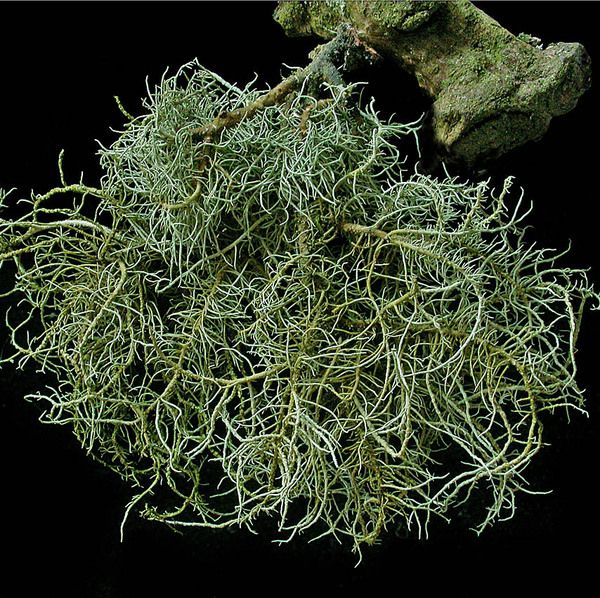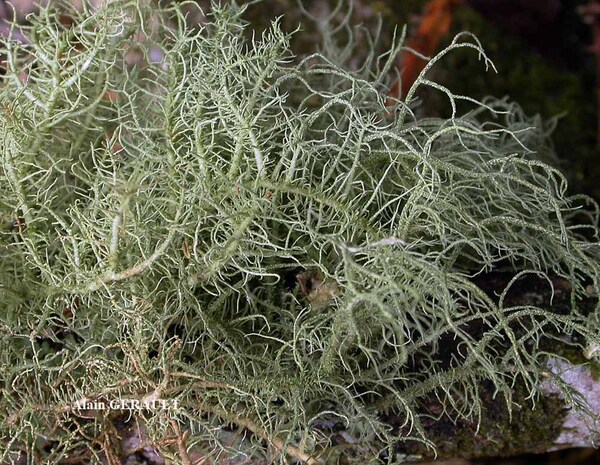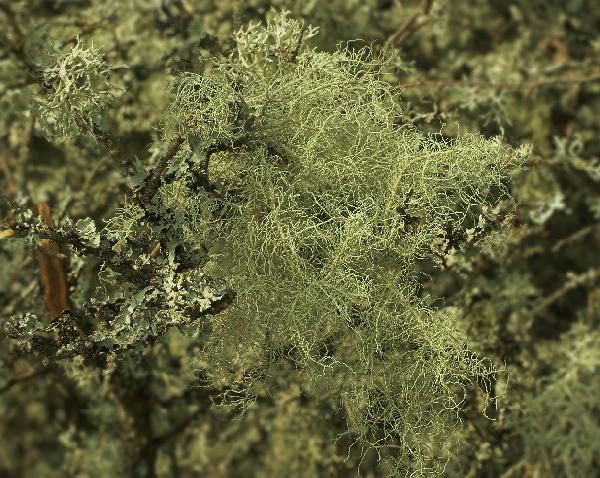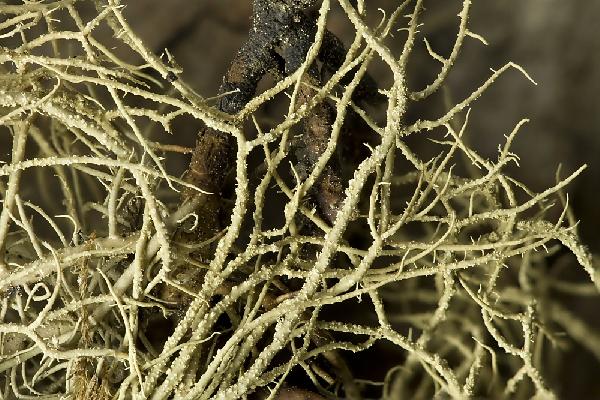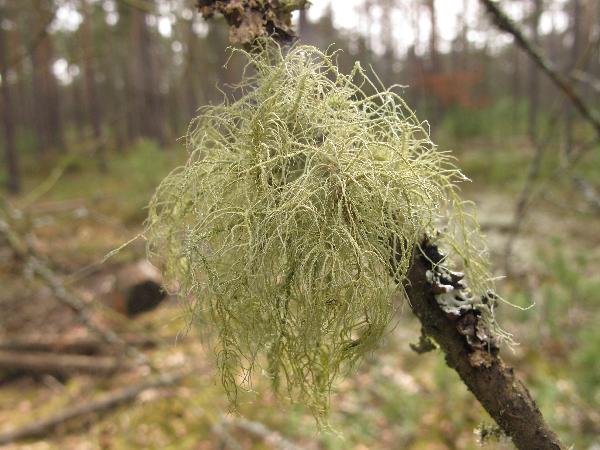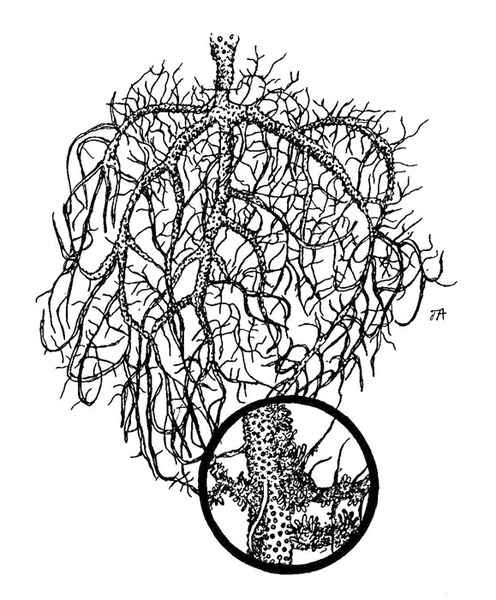Usnea subfloridana Stirt.
Scottish Natur., 6: 294, 1882.
Synonyms: Usnea comosa subsp. eucomosa Motyka; Usnea comosa subsp. similis Motyka; Usnea comosa var. scabriuscula Motyka; Usnea plicata var. comosa (Ach.) Ach.; Usnea similis (Motyka) Räsänen
Distribution: N - VG (Castello 2002, Martellos & Castello 2004, Castello & Skert 2005), Frl (Badin & Nimis 1996), Ven (Nimis & al. 1996c, Caniglia & al. 1999, Nascimbene & Caniglia 2002c, 2003c, Nascimbene 2005c), TAA (Nascimbene & Caniglia 2000b, 2002c, Nascimbene & al. 2007b, 2014, 2022, Lang 2009, Nascimbene 2014, 2014c, Nimis & al. 2015, Trindade & al. 2021), Lomb (Nascimbene 2006, Nascimbene & al. 2006e), Piem (Morisi & Sereno 1995), VA (Matteucci & al. 2008). C - Tosc (Loppi & al. 1998, Putortì & al. 1998), Marc (Nimis & Tretiach 1999), Umb (Ravera 2000, Panfili 2000, Ravera & al. 2006), Laz (Gigante & Petriccione 1995), Abr (Nimis & Tretiach 1999), Sar (Zedda 2002). S - Pugl (Nimis & Tretiach 1999), Bas (Potenza 2006, Potenza & Fascetti 2012), Cal (CLU 18063), Si (Ottonello & Romano 1997, Ottonello & al. 2011).
Description: Thallus fruticose-filamentous, greenish, shrubby to subpendent, 3-15(-20) cm long, richly and mainly isotomic-dichotomously branching, with divergent branches, very rarely pendulous and with subparallel branches. Main branches to 1.5 mm thick, tapering, the base blackened, the jet black pigmentation restricted to the very base, with few annular cracks; secondary branches not narrowed at attachment point. Papillae few to numerous, verrucose; fibrils few, not conspicuous, more abundant near the base and sparse terminally, not in a fish-bone like arrangement. Soralia typically punctiform, <50% of the branch diameter, of irregular shape, flat to slightly stipitate, more rarely fusing together and looking like a large soralium or enlarging ± isodiametrically and then >50% of the branch diameter, of irregular shape, slightly excavate; isidiomorphs always present, usually numerous and conspicuous. Cortex rather thick (8-12% of branch thickness), matt in longitudinal section; medulla white, thin (11-20%), dense to compact; central axis white, moderately thick (36–56%); ratio central axis/medulla (1.5-)2-5.3. Apothecia very rare. Photobiont chlorococcoid. Chemistry: cortex K-, C-, P-, with usnic acid; medulla: three chemotypes: (1) with thamnolic acid (K+ bright lemon yellow slowly turning orange, P+ yellow-orange) as a main substance; (2) with squamatic acid (K-, P-, UV+ whitish blue) as a main substance; (3) with both squamatic and thamnolic acids; alectorialic acid may occur as an accessory substance, especially in the apothecia (the disc reacting P+ yellow).Note: on branches of trees in relatively closed forests (but then in the upper parts of the crowns), and on isolated trees, one of the few species of Usnea which, albeit with stunted specimens, is also found at low altitudes and in relatively disturbed habitats. Already Seaward & Hitch (1982) considered this as the “secondary” species of U. florida, and molecular data do not support the distinction between the two species (Articus & al. 2002, see also Degtjarenko & al. 2020), but here I prefer to maintain them as distinct, due both to their different ecology and to the fact that population genomic analyses of RAD-sequences allowed to distinguish two species in a similar case concerning Antarctic Usnea-species (Grewe & al. 2018).
Growth form: Fruticose filamentous
Substrata: bark
Photobiont: green algae other than Trentepohlia
Reproductive strategy: mainly asexual, by soredia, or soredia-like structures (e.g. blastidia)
Commonnes-rarity: (info)
Alpine belt: absent
Subalpine belt: rather common
Oromediterranean belt: absent
Montane belt: rare
Submediterranean belt: rare
Padanian area: absent
Humid submediterranean belt: rare
Humid mediterranean belt: absent
Dry mediterranean belt: absent

Predictive model
Herbarium samples
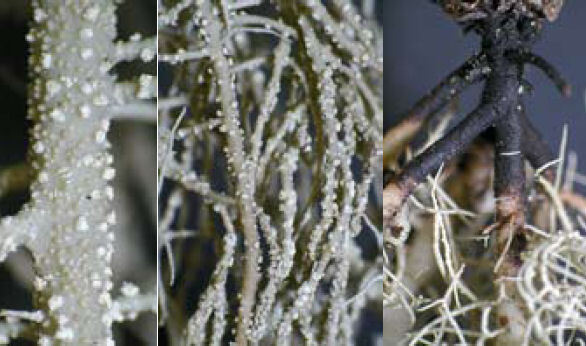
Tiiu Tõrra; Owner: Tiiu Tõrra - Institute of Ecology and Earth Sciences, University of Tartu, Estonia

Tiiu Tõrra; Owner: University of Tartu
Estonia.
Herbarium: TU (32907)
2007/04/25
Isidiomorphs of U. subfloridana
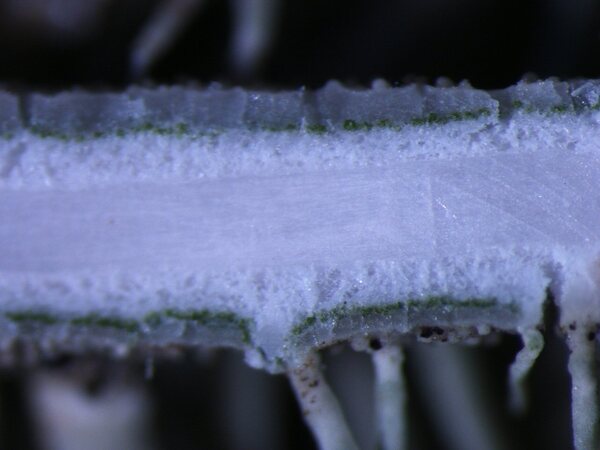
Tiiu Tõrra; Owner: University of Tartu
Estonia.
Herbarium: TU (32909)
2007/04/24
Dense medulla of U. subfloridana

Tiiu Tõrra; Owner: University of Tartu
Estonia.
Herbarium: TU (32172)
2007/04/26
Fibrills of U. subfloridana

Tiiu Tõrra; Owner: University of Tartu
Estonia.
Herbarium: TU (32173)
2007/04/26
Papillae on branches of U. subfloridana
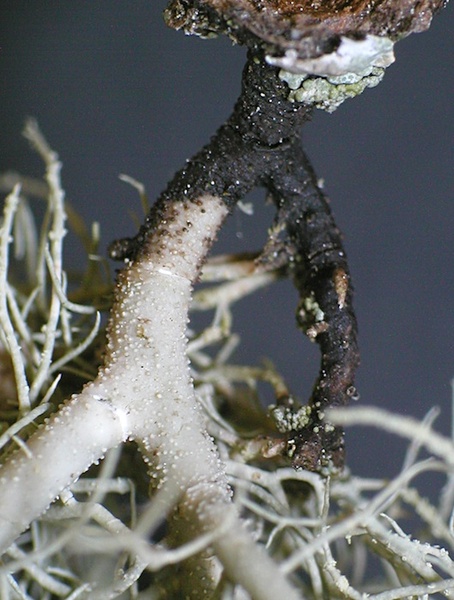
Tiiu Tõrra; Owner: Tiiu Tõrra - Institute of Ecology and Earth Sciences, University of Tartu, Estonia

Tiiu Tõrra; Owner: Tiiu Tõrra - Institute of Ecology and Earth Sciences, University of Tartu, Estonia
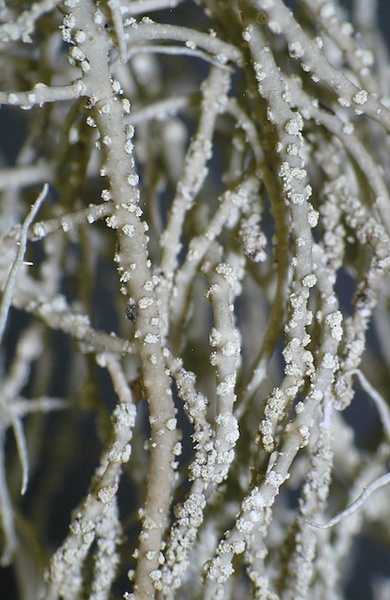
Tiiu Tõrra; Owner: Tiiu Tõrra - Institute of Ecology and Earth Sciences, University of Tartu, Estonia
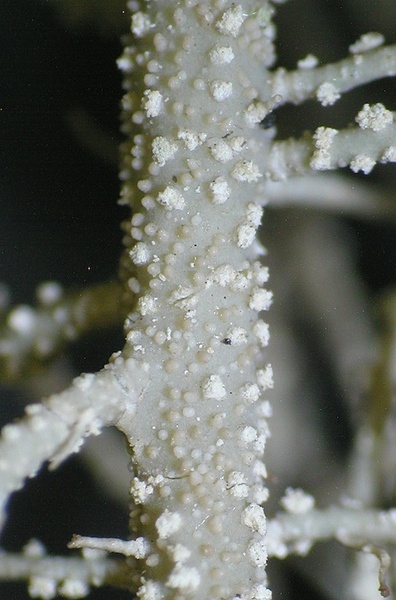
Tiiu Tõrra; Owner: Tiiu Tõrra - Institute of Ecology and Earth Sciences, University of Tartu, Estonia
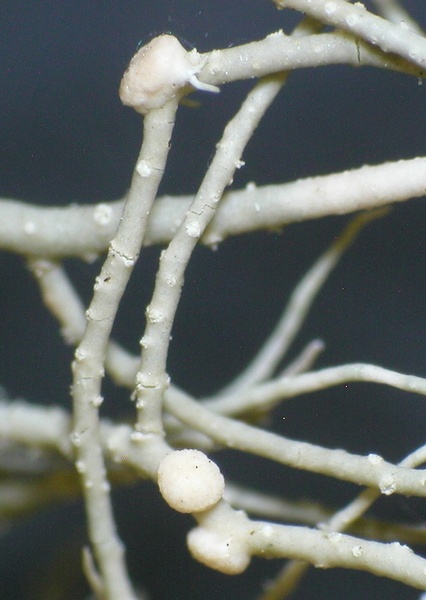
Tiiu Tõrra; Owner: Tiiu Tõrra - Institute of Ecology and Earth Sciences, University of Tartu, Estonia
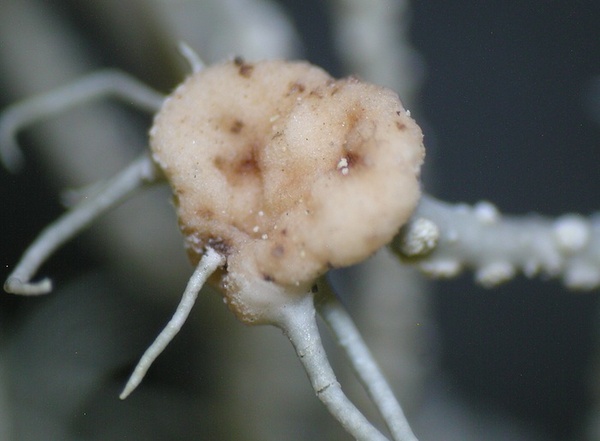
Tiiu Tõrra; Owner: Tiiu Tõrra - Institute of Ecology and Earth Sciences, University of Tartu, Estonia
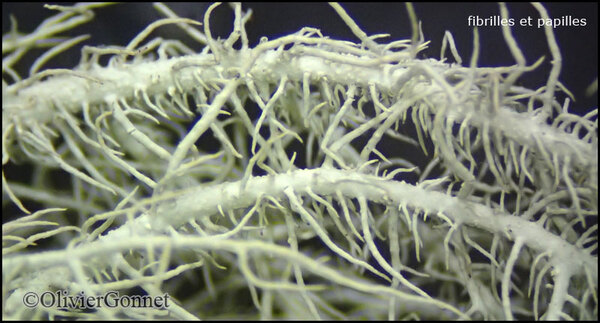
Courtesy Danièle et Olivier Gonnet - Source: hhttps://www.afl-lichenologie.fr/Photos_AFL/Photos_AFL_U/Usnea_subfloridana.htm
France, 25/5/2015 - session AFL dans le Lot - Moulin du Saut, Gramat

Courtesy Danièle et Olivier Gonnet - Source: hhttps://www.afl-lichenologie.fr/Photos_AFL/Photos_AFL_U/Usnea_subfloridana.htm
France, 25/5/2015 - session AFL dans le Lot - Moulin du Saut, Gramat

Courtesy Danièle et Olivier Gonnet - Source: hhttps://www.afl-lichenologie.fr/Photos_AFL/Photos_AFL_U/Usnea_subfloridana.htm
France, 25/5/2015 - session AFL dans le Lot - Moulin du Saut, Gramat

Courtesy Danièle et Olivier Gonnet - Source: hhttps://www.afl-lichenologie.fr/Photos_AFL/Photos_AFL_U/Usnea_subfloridana.htm
France, 25/5/2015 - session AFL dans le Lot - Moulin du Saut, Gramat

Courtesy Danièle et Olivier Gonnet - Source: hhttps://www.afl-lichenologie.fr/Photos_AFL/Photos_AFL_U/Usnea_subfloridana.htm
France, 25/5/2015 - session AFL dans le Lot - Moulin du Saut, Gramat
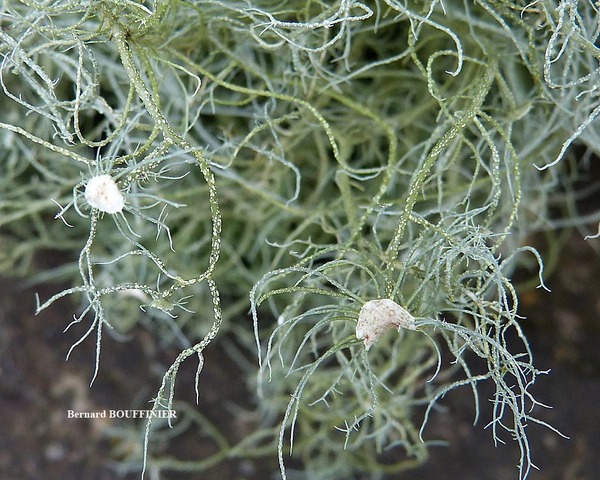
Bernard Bouffinier- Source: http://www.lichensmaritimes.org/index.php?task=fiche&lichen=492&lang=en
France, Huelgoat
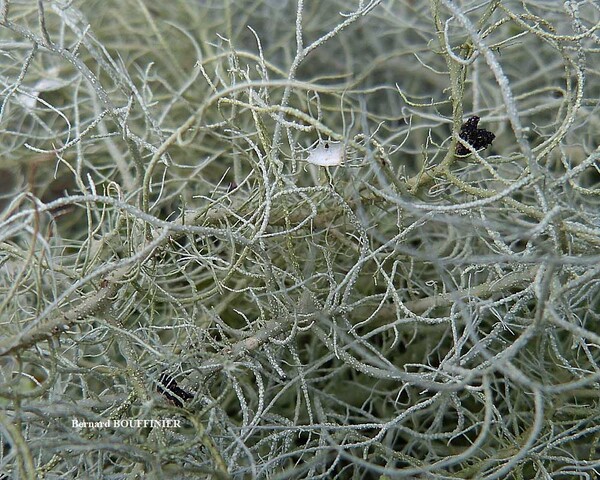
Bernard Bouffinier- Source: http://www.lichensmaritimes.org/index.php?task=fiche&lichen=492&lang=en
France, Huelgoat
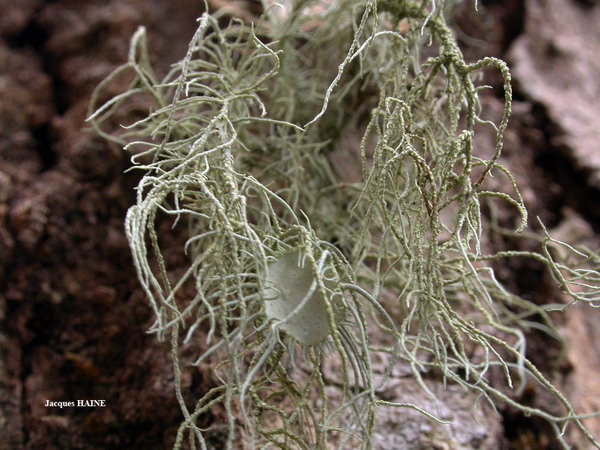
Jacques Haine Source: http://www.lichensmaritimes.org/index.php?task=fiche&lichen=492&lang=en
France, Ardennes
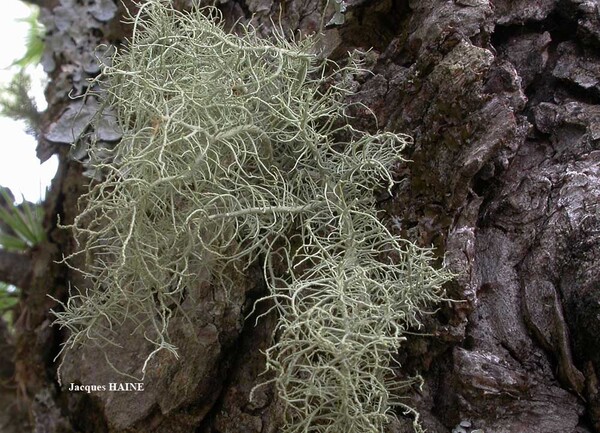
Jacques Haine Source: http://www.lichensmaritimes.org/index.php?task=fiche&lichen=492&lang=en
France, Ardennes
Growth form: Fruticose filamentous
Substrata: bark
Photobiont: green algae other than Trentepohlia
Reproductive strategy: mainly asexual, by soredia, or soredia-like structures (e.g. blastidia)
Commonnes-rarity: (info)
Alpine belt: absent
Subalpine belt: rather common
Oromediterranean belt: absent
Montane belt: rare
Submediterranean belt: rare
Padanian area: absent
Humid submediterranean belt: rare
Humid mediterranean belt: absent
Dry mediterranean belt: absent

Predictive model
| Herbarium samples |

Tiiu Tõrra; Owner: Tiiu Tõrra - Institute of Ecology and Earth Sciences, University of Tartu, Estonia

Tiiu Tõrra; Owner: University of Tartu
Estonia.
Herbarium: TU (32907)
2007/04/25
Isidiomorphs of U. subfloridana

Tiiu Tõrra; Owner: University of Tartu
Estonia.
Herbarium: TU (32909)
2007/04/24
Dense medulla of U. subfloridana

Tiiu Tõrra; Owner: University of Tartu
Estonia.
Herbarium: TU (32172)
2007/04/26
Fibrills of U. subfloridana

Tiiu Tõrra; Owner: University of Tartu
Estonia.
Herbarium: TU (32173)
2007/04/26
Papillae on branches of U. subfloridana

Tiiu Tõrra; Owner: Tiiu Tõrra - Institute of Ecology and Earth Sciences, University of Tartu, Estonia

Tiiu Tõrra; Owner: Tiiu Tõrra - Institute of Ecology and Earth Sciences, University of Tartu, Estonia

Tiiu Tõrra; Owner: Tiiu Tõrra - Institute of Ecology and Earth Sciences, University of Tartu, Estonia

Tiiu Tõrra; Owner: Tiiu Tõrra - Institute of Ecology and Earth Sciences, University of Tartu, Estonia

Tiiu Tõrra; Owner: Tiiu Tõrra - Institute of Ecology and Earth Sciences, University of Tartu, Estonia

Tiiu Tõrra; Owner: Tiiu Tõrra - Institute of Ecology and Earth Sciences, University of Tartu, Estonia

Courtesy Danièle et Olivier Gonnet - Source: hhttps://www.afl-lichenologie.fr/Photos_AFL/Photos_AFL_U/Usnea_subfloridana.htm
France, 25/5/2015 - session AFL dans le Lot - Moulin du Saut, Gramat

Courtesy Danièle et Olivier Gonnet - Source: hhttps://www.afl-lichenologie.fr/Photos_AFL/Photos_AFL_U/Usnea_subfloridana.htm
France, 25/5/2015 - session AFL dans le Lot - Moulin du Saut, Gramat

Courtesy Danièle et Olivier Gonnet - Source: hhttps://www.afl-lichenologie.fr/Photos_AFL/Photos_AFL_U/Usnea_subfloridana.htm
France, 25/5/2015 - session AFL dans le Lot - Moulin du Saut, Gramat

Courtesy Danièle et Olivier Gonnet - Source: hhttps://www.afl-lichenologie.fr/Photos_AFL/Photos_AFL_U/Usnea_subfloridana.htm
France, 25/5/2015 - session AFL dans le Lot - Moulin du Saut, Gramat

Courtesy Danièle et Olivier Gonnet - Source: hhttps://www.afl-lichenologie.fr/Photos_AFL/Photos_AFL_U/Usnea_subfloridana.htm
France, 25/5/2015 - session AFL dans le Lot - Moulin du Saut, Gramat

Bernard Bouffinier- Source: http://www.lichensmaritimes.org/index.php?task=fiche&lichen=492&lang=en
France, Huelgoat

Bernard Bouffinier- Source: http://www.lichensmaritimes.org/index.php?task=fiche&lichen=492&lang=en
France, Huelgoat

Jacques Haine Source: http://www.lichensmaritimes.org/index.php?task=fiche&lichen=492&lang=en
France, Ardennes

 INDEX FUNGORUM
INDEX FUNGORUM
 GBIF
GBIF
 DOLICHENS
DOLICHENS
